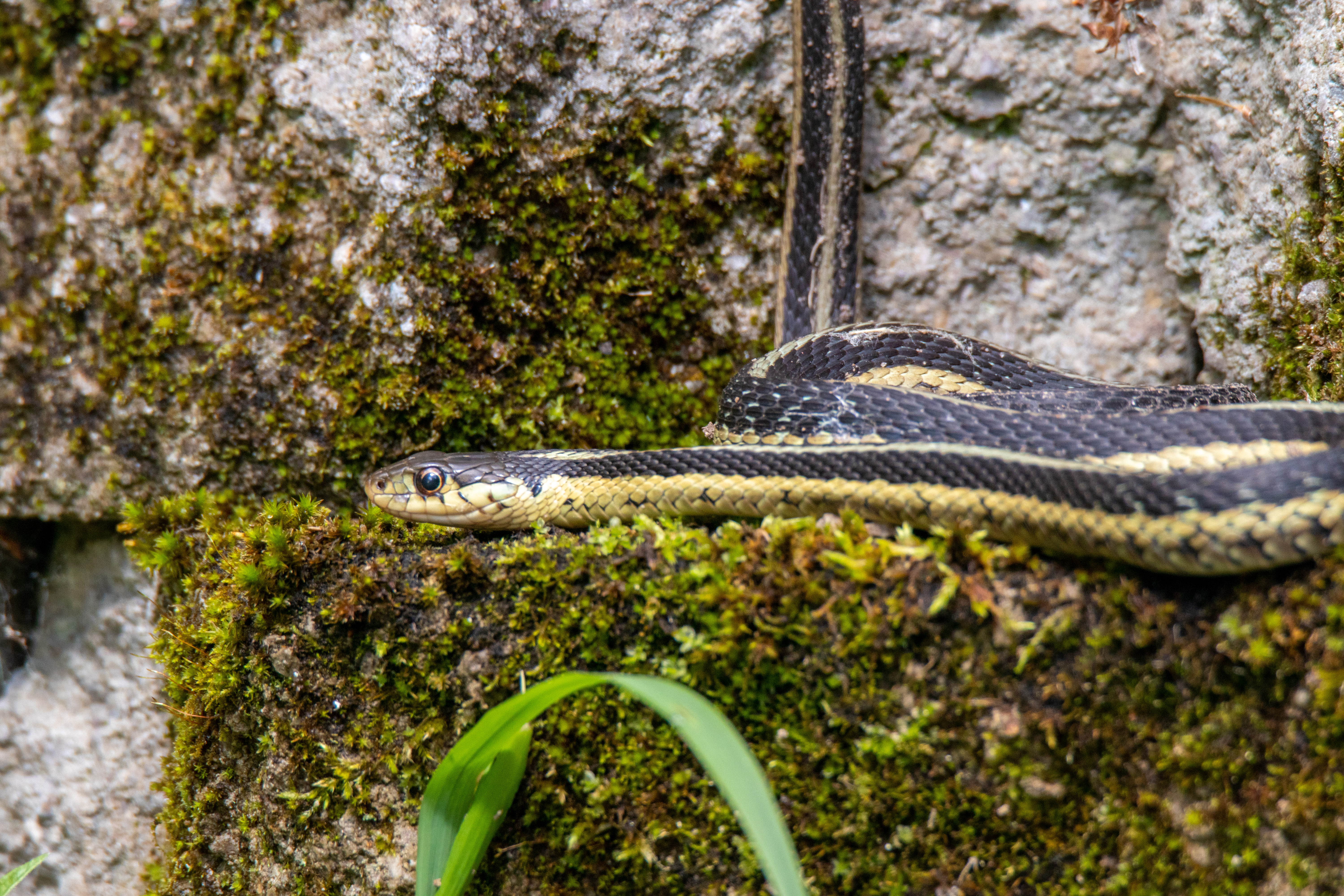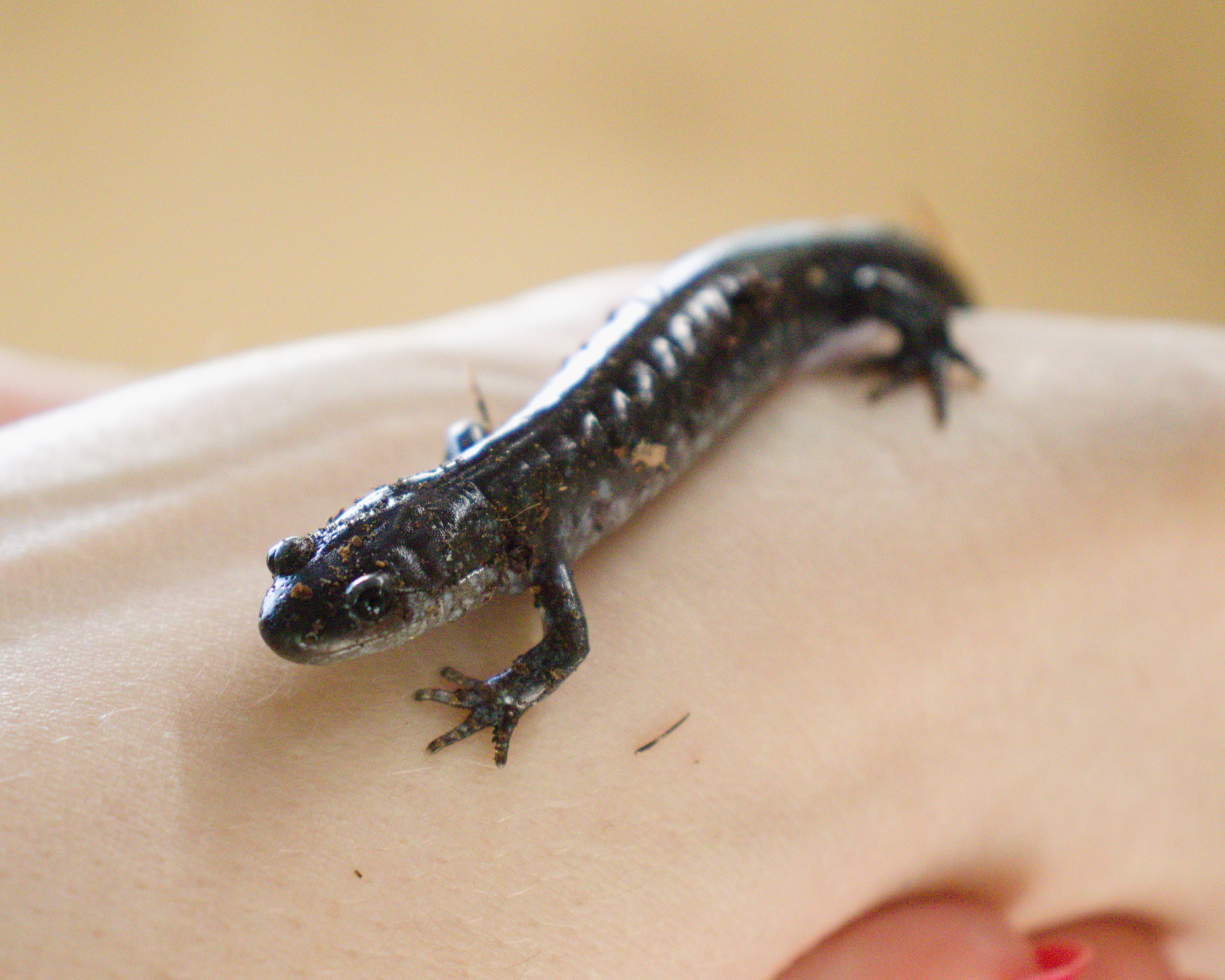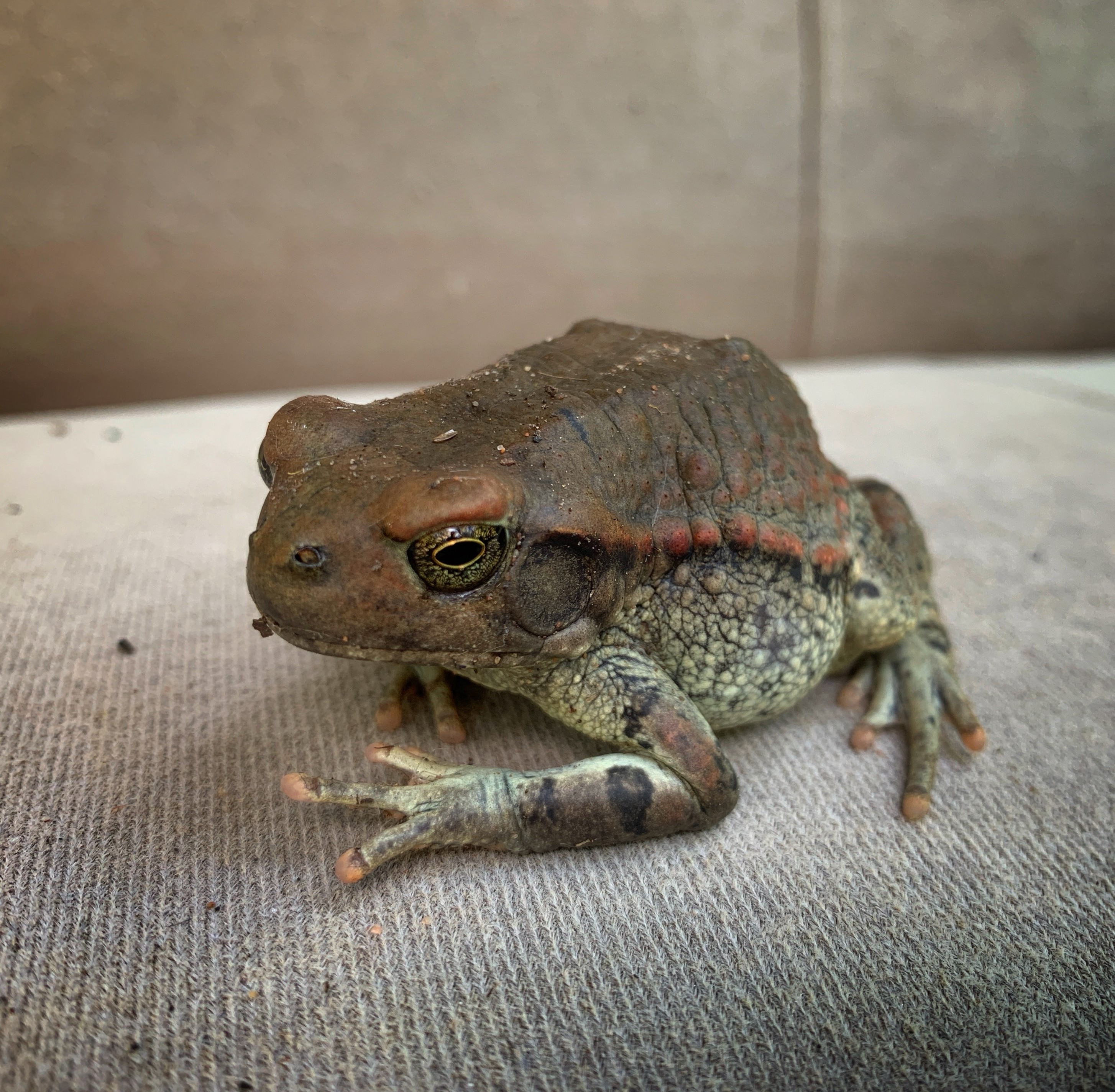Reptiles and Amphibians

Found this *Imantodes cenchoa* sleeping on top of a leaf in Punta Laguna, Quintana Roo. Here is a photo of where it was sleeping: 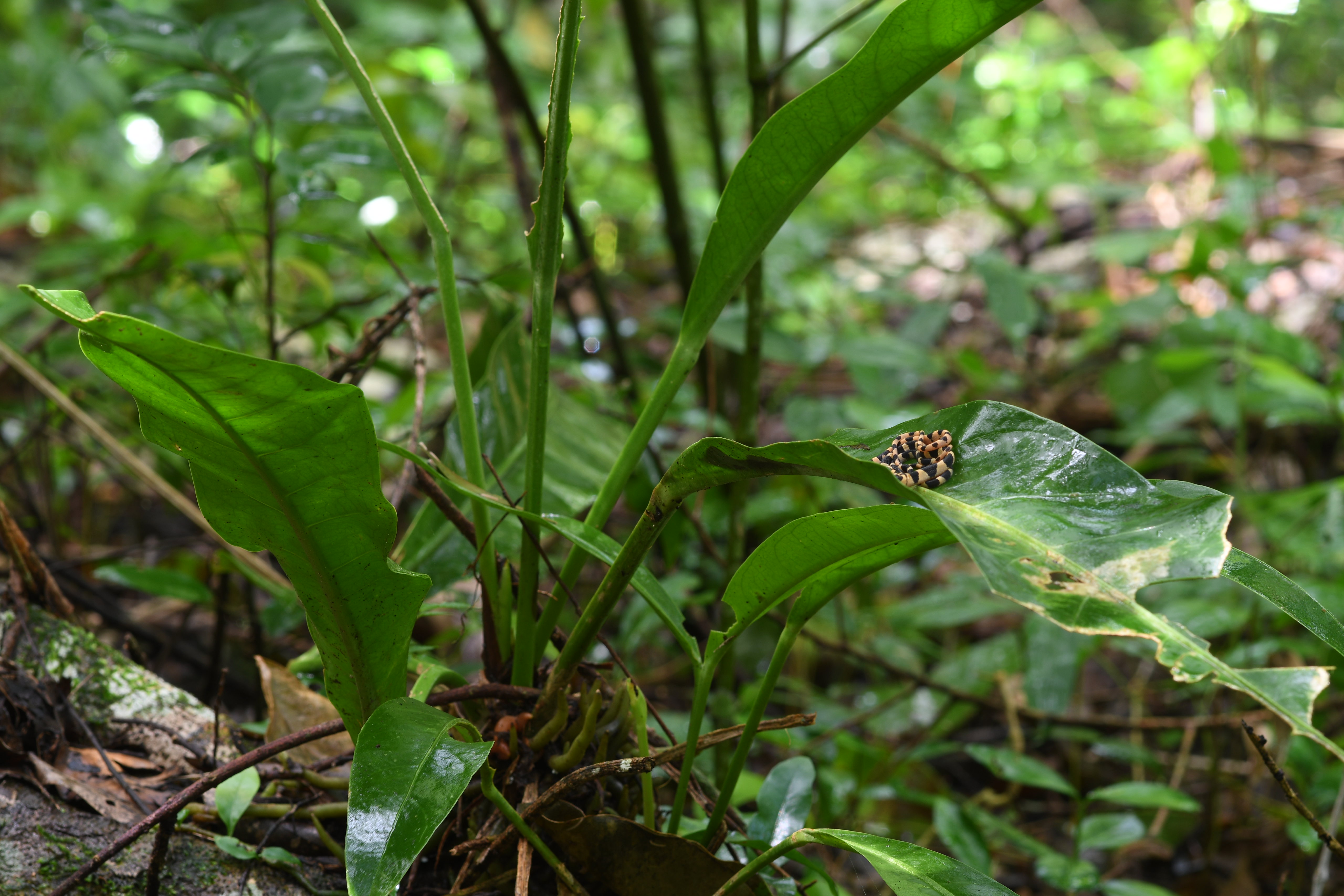 There are a few different snakes of the genus *Imantodes* in Yucatán. What sets this species apart is that the row of scales on its back consists of enlarged scales. Here is a closeup emphasizing that row of scales. The green arrow points at an enlarged mid-dorsal scale, the blue arrow at a regular scale. 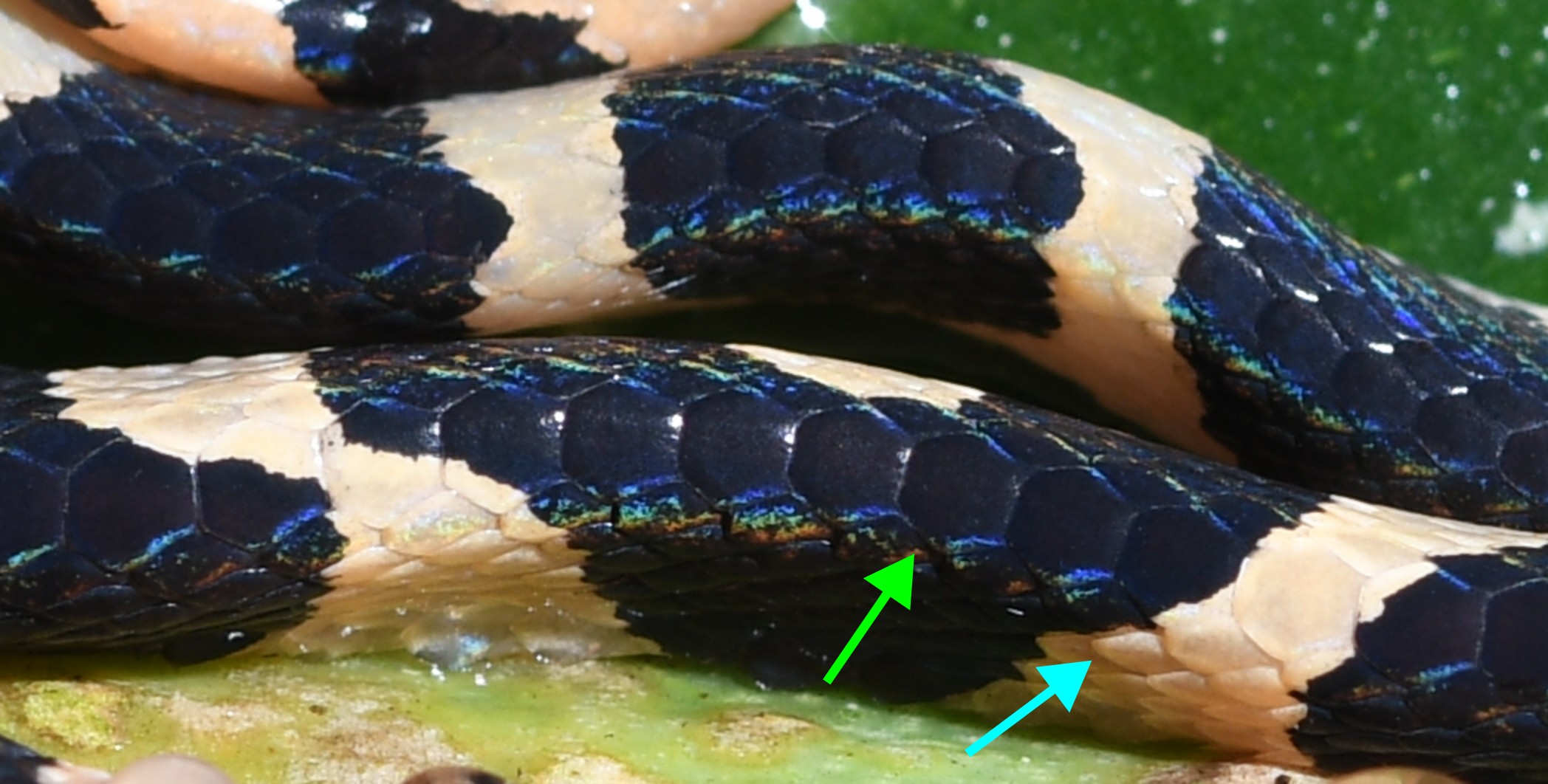 In comparison, here is a photo from an *Imantodes tenuissimus* that I took back in 2009 in Mérida, Yucatán (with a less sharp camera), and a closeup of its mid-dorsal scales that does not show this enlargement. 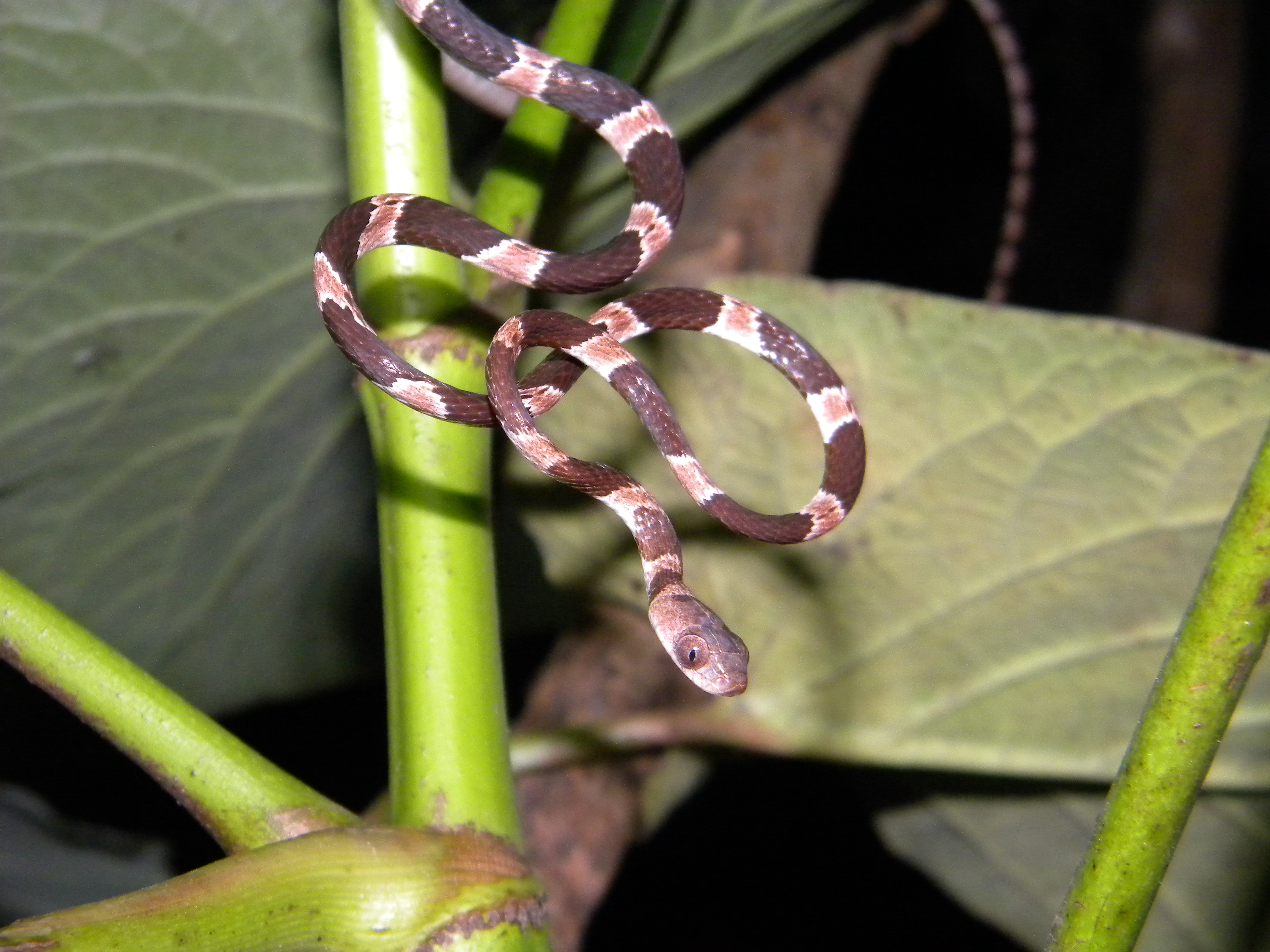 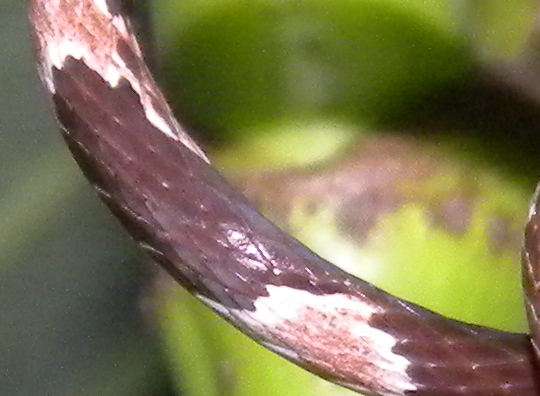

One of my favorite frogs! Spent some time specifically looking for it. Managed to find two near Cobá, in Quintana Roo (in the Yucatán peninsula). This frog hides in holes in lime stone and tree trunks, and makes use of its flat head to block the entrance. This type of defense is known as [phragmosis](https://en.wikipedia.org/wiki/Phragmosis). Some other shots: 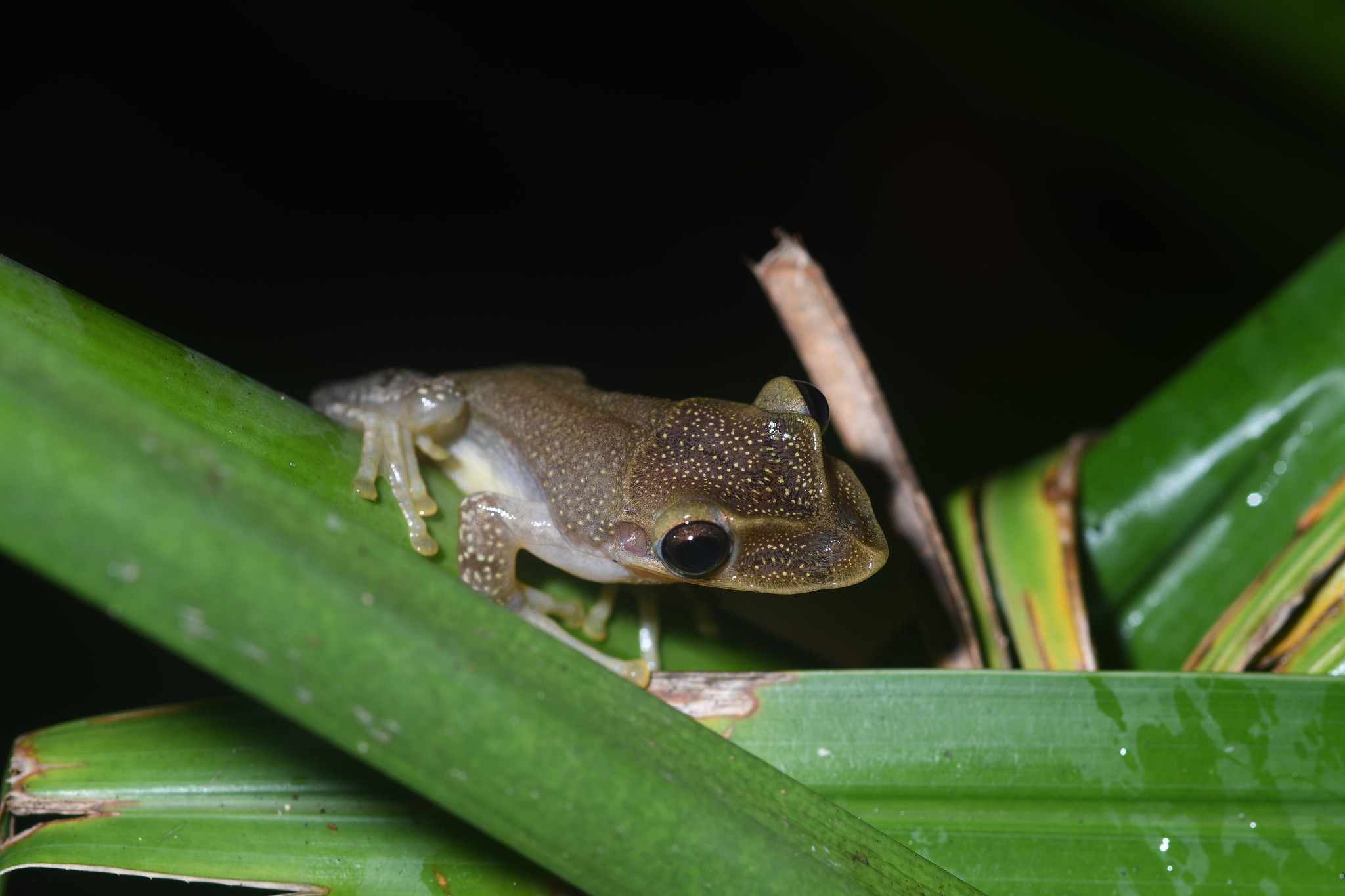 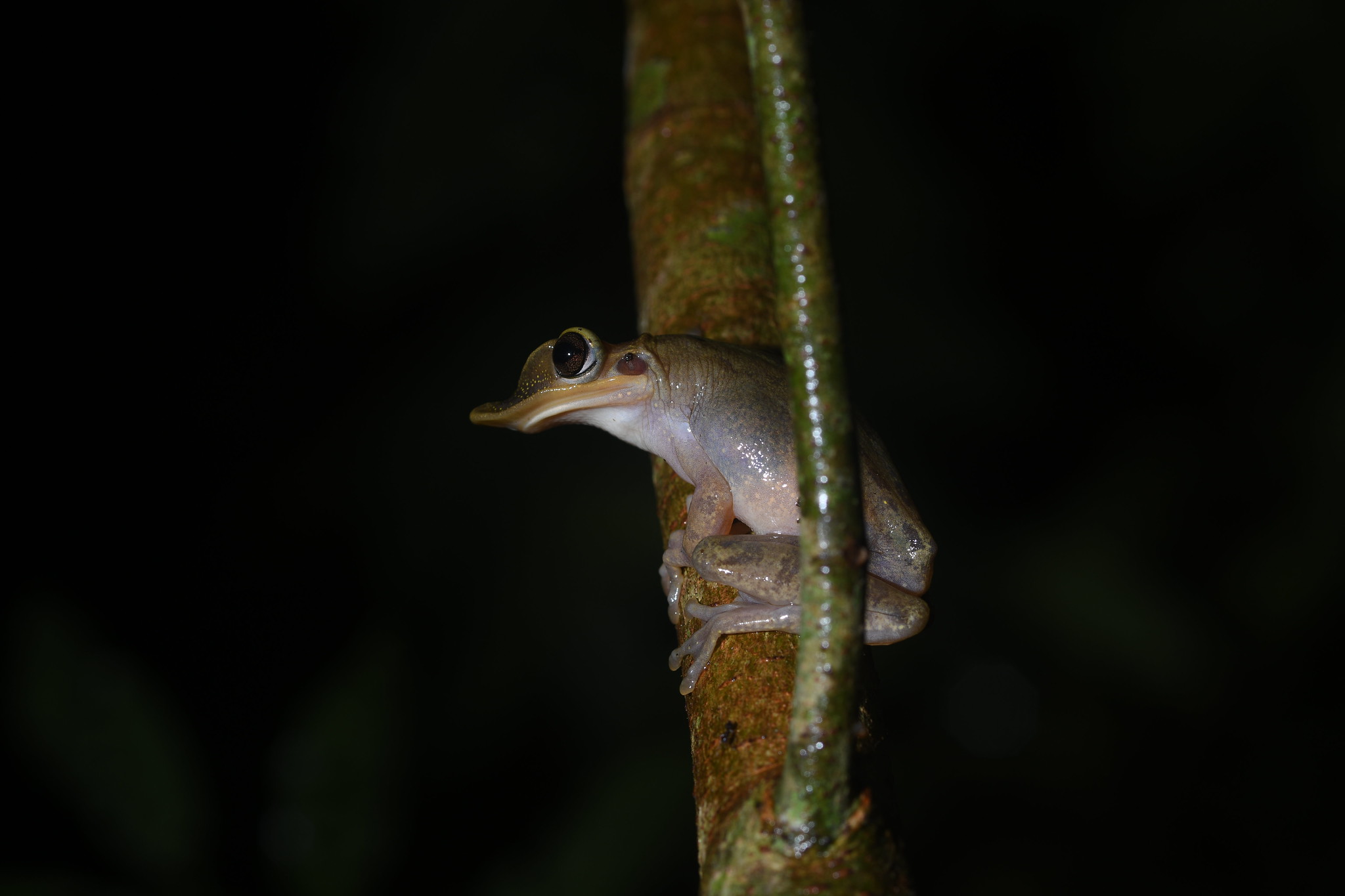

Found this anole in Yucatan. I am not sure of its exact species - probably an *Anolis sp*.. Anoles often sleep at the tips of leaves and twigs. My guess is that this is a strategy to prevent nocturnal predators sneaking up on them through the branches without making its bed vibrate. When woken up they can quickly drop down.
Im noticing white chalky excretions in my tank but I'm not seeing any turds. Can the lizard still be blocked up or are they fine?

Found this little gal(?) In my bedroom all emaciated and sluggish, got her a heat pad, uv lamp and fattening it up with small crickets with calcium. Think it's a New Mexican Whiptail but not sure. Looks kinda wrinkly. Is it ok?
Hi - Wondering if someone know a reputable rankin dragon breeder. I’m first time reptile enthusiast and looking to find good trustworthy breeders in the US. Thanks

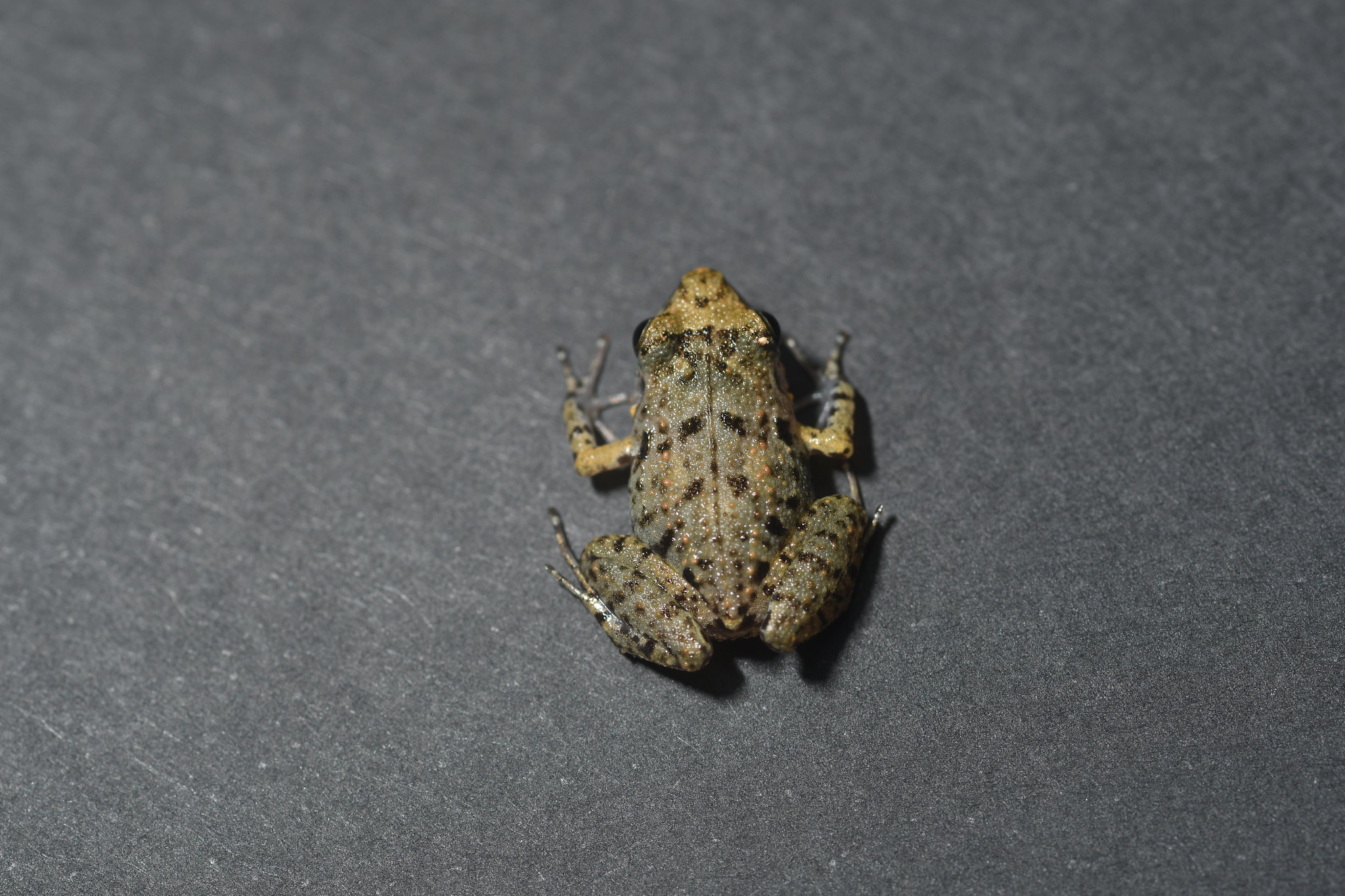 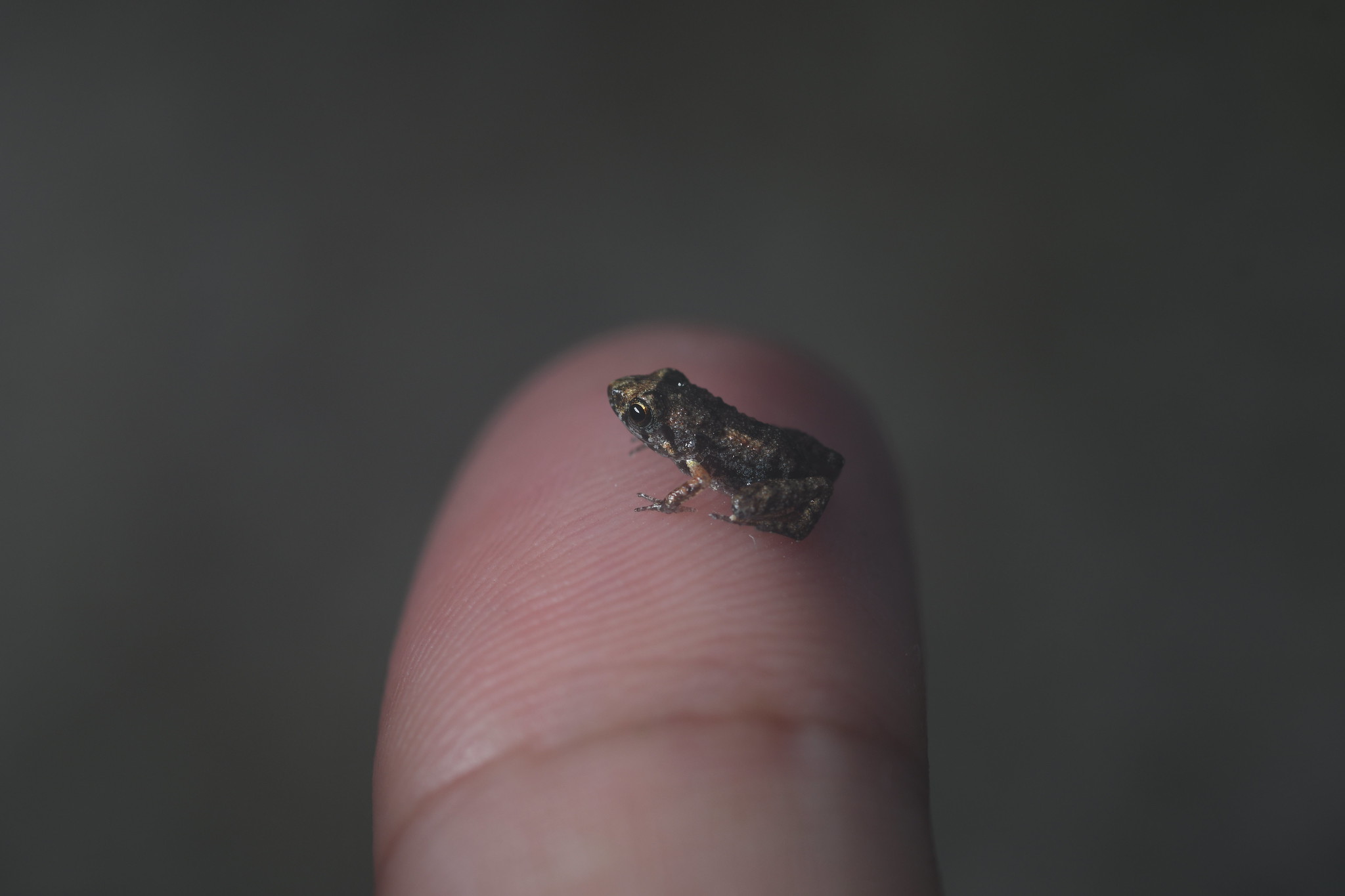 Found many of these frogs under a wet trash bag in a back yard in Mérida, Yucatán. I made use of a handheld flash with a remote trigger for lighting, and a Sigma 105 mm as my macro lens. These frogs do not seem to match with any of the local frogs reported in Julian C. Lee's field guide to the amphibians and reptiles of the maya world. From a reverse image search, I mostly found images of the green house frog *Eleutherodactylus planirostris*. *Eleutherodactylus planirostris* is native to Cuba and the Bahamas, and is often introduced with plants that come from green houses in those areas. These frogs go from tadpole to frog while still inside of the egg, which explains why the baby frogs are so small. The visual aspect, the incredibly small baby frogs, and the fact that they were found in a back yard in the city with greenhouse plants, all lead me to conclude that it is likely *Eleutherodactylus planirostris*.
Saw this nice guy/gal in front of my shed this morning when I took the dog out. The dog was completely oblivious and I was able to get a nice pic without scaring it off.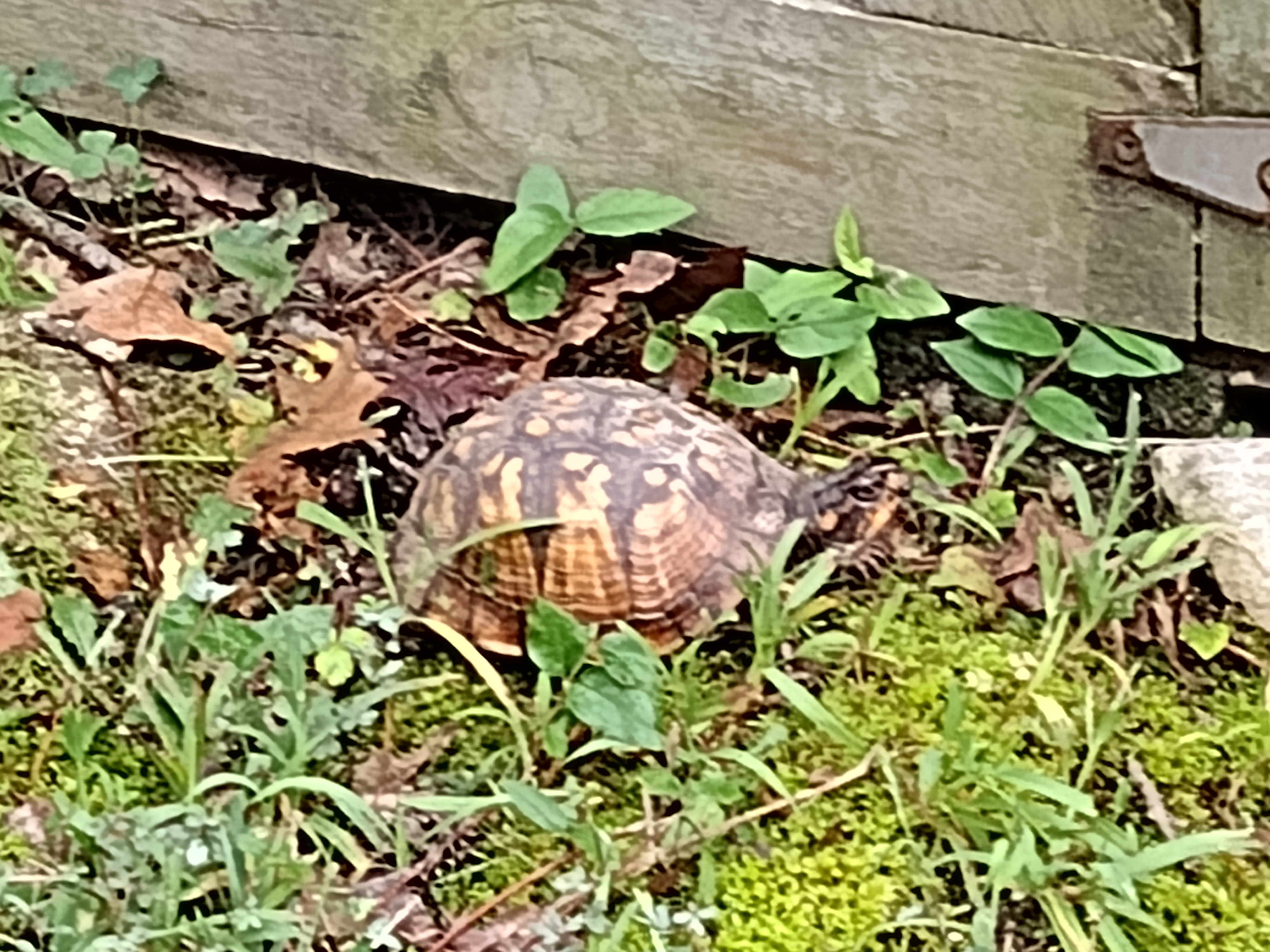

Aka Bleating Froglets
cross-posted from: https://programming.dev/post/18310392 > Royals aren't exactly the most trainable snakes and Revy still isn't super comfy with moving very far, but she's great at orienting towards the target and did really well today 🥰 I'm very proud of her! > > If you wanna know more about Target Training, check out [Lori Torrini](https://youtube.com/@loritorrini) on Youtube! She's pioneering the whole concept, and really really knowledgeable about snake behavior and cooperative care 💕

About 2cm long! Cute as hell.

smh my head 😤 ~~She's surprisingly good at climbing tho~~  (actually just a Python Regius if you can't tell lol)

These guys are so pretty, they love hanging out around toilets in the outback.

Mt Magnet, Western Australia

Several 2cm long frogs were found in this tiny little granite pool in the desert. Any IDs would be welcome, I suspect it could be a Litoria of some sort.

cross-posted from: https://lemmy.ml/post/13688681 > On the 9 June 2023, at Mala, Karkala, Karnataka, India, researchers found Rao’s intermediate golden-backed frog, (Hylarana intermedia) with a rather fetching, fungal companion growing out of it's side > > Mycologists identified the fungi as Common Bonnet, part of the Mycena genus, a type of fungi that mostly grows on rotting wood from dead trees, however it has also been discovered to be able to thrive on living plants as well > > > 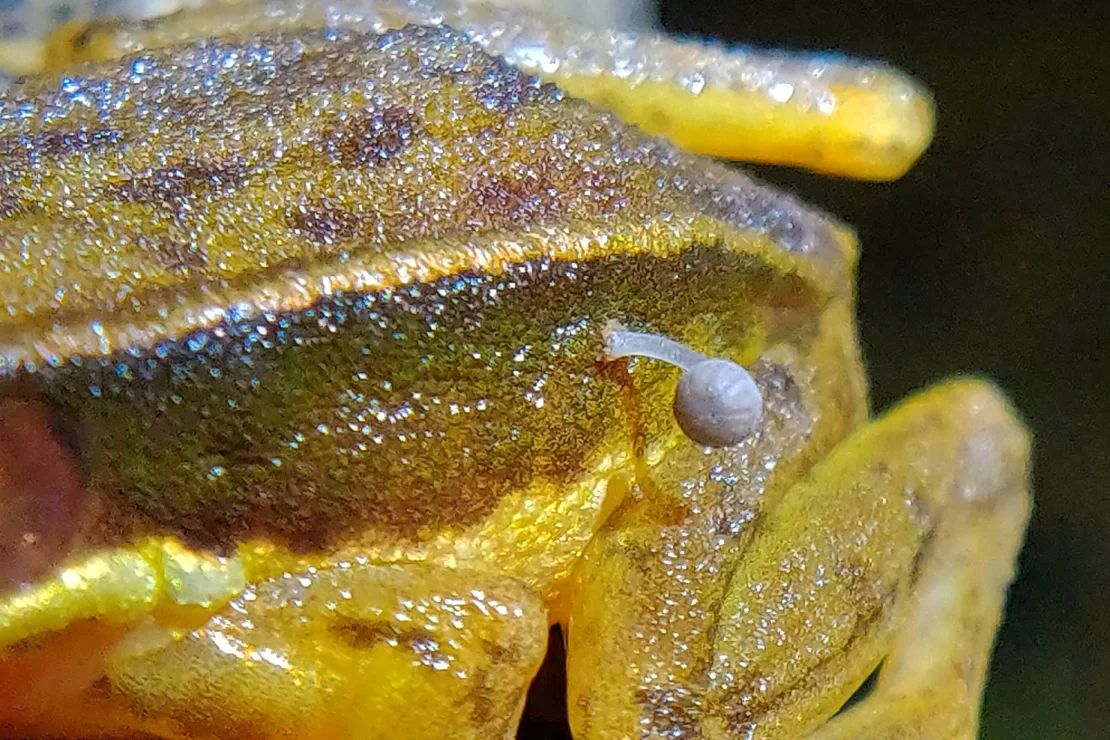 > > The frog appeared to be quite healthy and was not caught, so there's no definitive answer why it was hosting a mushroom, however... > > >...one of the possibilities is that there is a small piece of woody debris under the skin of the frog after it got lodged in the skin and it has sprouted a mushroom from it.... > > All info from [here](https://journals.ku.edu/reptilesandamphibians/article/view/20966/19496) and [here](https://edition.cnn.com/2024/02/29/world/mushroom-frog-growth-chytrid-disease-scn/index.html) > > All photos by [Lohit Y.T.](https://journals.ku.edu/reptilesandamphibians/article/view/20966/19496) one of the researchers who discovered the frog and co-author of the paper >

Link to the article: https://onlinelibrary.wiley.com/doi/10.1002/ece3.10926 **Abstract** >Temperature is essential for the survival and development of eggs. Some anurans have evolved and developed foam nesting traits, with thermal insulation considered to be among their functions. Foam-nesting frogs tend to exhibit reproductive plasticity. For example, they oviposit on both trees and the ground. How such plasticity affects foam nest function is of major relevance and is likely related to the adaptation of foam nesting frogs. However, this has not been well studied. In this study, we examined the interaction between foam nest site, foam nest function, and egg fate using the Japanese green tree frog, Zhangixalus arboreus, and analysed how nest site differences (arboreal or terrestrial) affect the thermal function of foam nests. We compared the thermal functions of foam nests between arboreal and terrestrial oviposition sites of Z. arboreus. We artificially replaced half of the arboreal nests with terrestrial environments and recorded temperature in and outside of the experimental terrestrial nest and original arboreal nests. We also examined egg survival and hatching rates for all the nests. The results indicated superior heat insulation in terrestrial nests, with warmer temperatures inside than outside the nests, especially at night, which led to a high egg survival rate. Therefore, terrestrial ovipositing should be valid under cold weather conditions. This may be related to the evolutionary history of oviposition site plasticity of this genus, which originally had an arboreal oviposition trait but evolved into terrestrial site use owing to global cooling. Our novel insights into the evolution and adaptivity of foam nesting and oviposition site use in Z. arboreus make an important contribution to animal ecology.

I think that is what it is. Extraordinary climbers. I find them on the second floor of the house every few months. I see them outside a few times a week. Colouration is highly variable locally. Here they are green and black. Wikipedia and a few other sources say this > Also, it is reported to take snakes occasionally, and to avoid frogs, though frogs are also reported being eaten. In Cambodia they always take frogs, and will strike poisonous toads, then spit them out.

Lovely things, quite relaxed as babies. This one was rescued from a palm tree after a storm. Another photo in body.
I was browsing through some literature about color-changing in chameleons and stumbled upon this relatively recent paper about how chameleons will change color where mosquitoes bite them.  From the discussion: >While determining the particular mechanism(s) of color change is outside the scope of the current study, we nonetheless serendipitously discovered multiple instances of mosquito bite-induced color change in wild chameleons. This demonstrates that citizen science can produce discoveries of previously unknown natural phenomena, as our study represents the first formal documentations of mosquitoes feeding on chameleons as well as chameleon color change induced by arthropod hematophagy. These findings provide additional insights into the parasite-host interactions, such as the mosquitoes feeding on sleeping chameleons and particularly at the mouth.

Still a lot to do and fill out. All surfaces are sealed a long time ago and should be reptile safe. Cat palm is reptile safe from what I’ve seen. 4 nozzle MistKing sprayer setup for humidity, heat+uva/b provided by multiple bulbs. R.O. water provided in basin and spraying. Always open to more advice for husbandry! His name is Julian and he gets a large variety of veggies minimizing oxalates

Link to the PDF: https://amphibian-reptile-conservation.org/pdfs/Volume/Vol_17_nos_1-2/ARC_17_1-2_[General_Section]_143-160_e327.pdf

Link to the paper: https://www.ncbi.nlm.nih.gov/pmc/articles/PMC10193848/ The paper is from April, but I just became aware of it now! Some other cool images if the newly discovered species (*Bolitoglossa muisca*) taken from the paper: [](https://i.imgur.com/FOwAXsK.png) 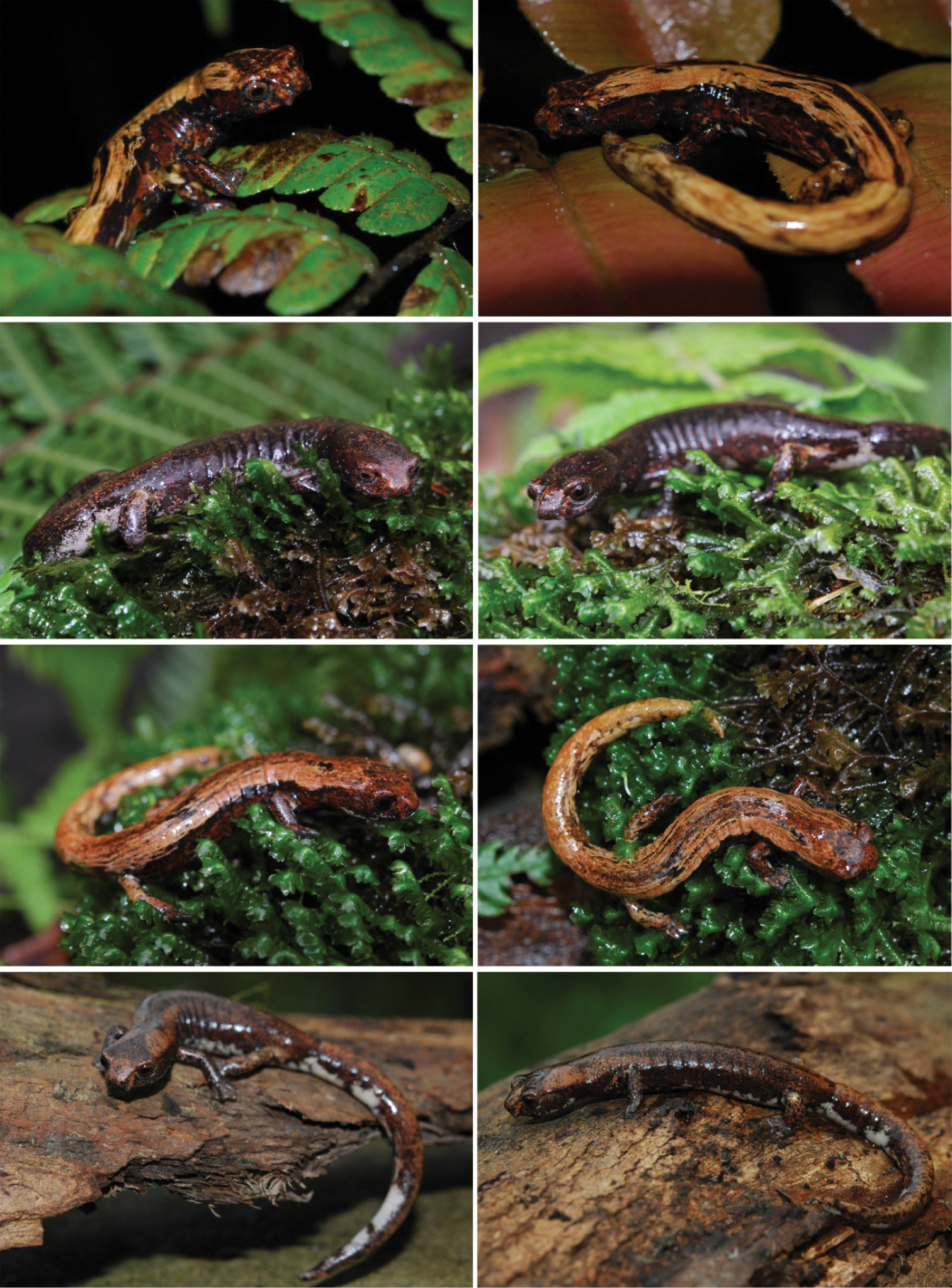 And its habitat: 

Edit: We have already freed them. We were worried that they were poisonous and something could happen to our dog. Thank you very much to all.
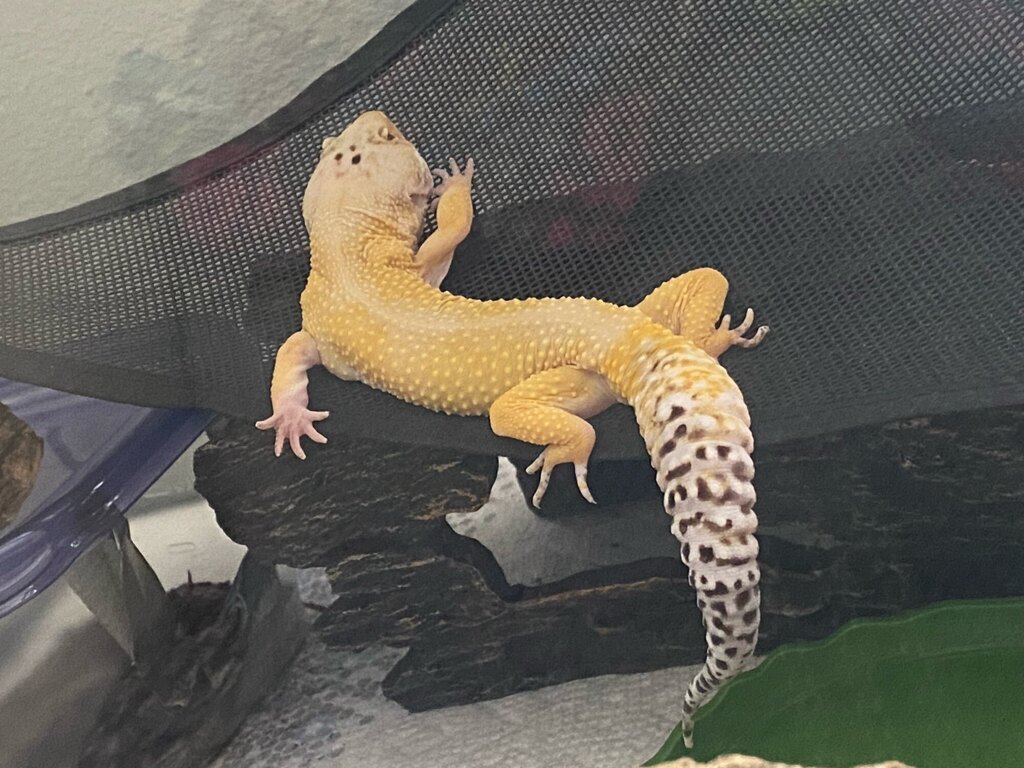

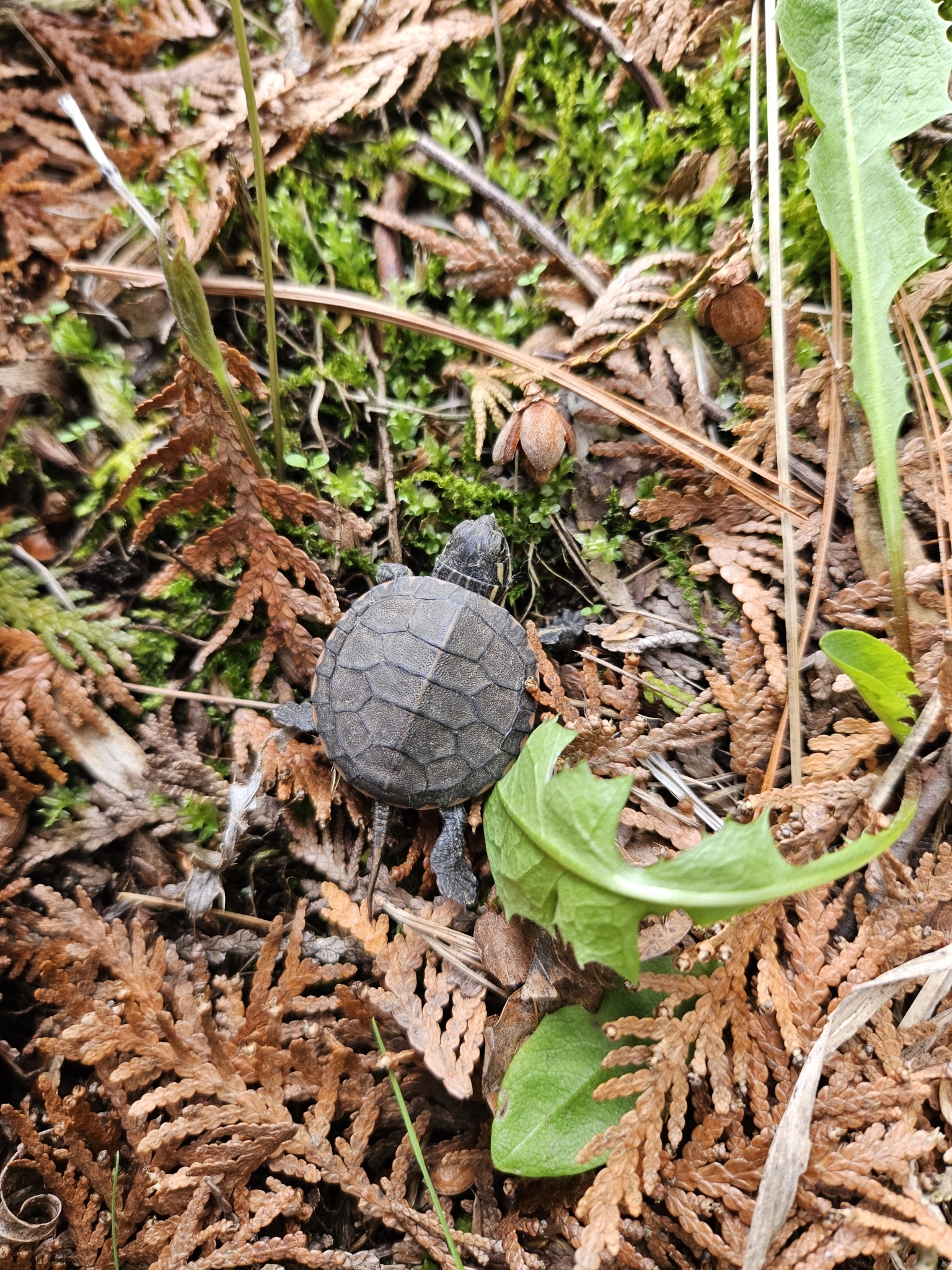 Found it near our front door and moved it closer to the river.

